Annually, over 5 million calves are born on over 130,000 cow-calf operations in Texas! With an inventory of over 11.8 million head, Texas is the top cattle producing state in the nation. Below, we go through how beef is produced, by-products, preparation, and nutrition. Fun fact: A full grown cow can eat more than 25 pounds of hay or grass every day!
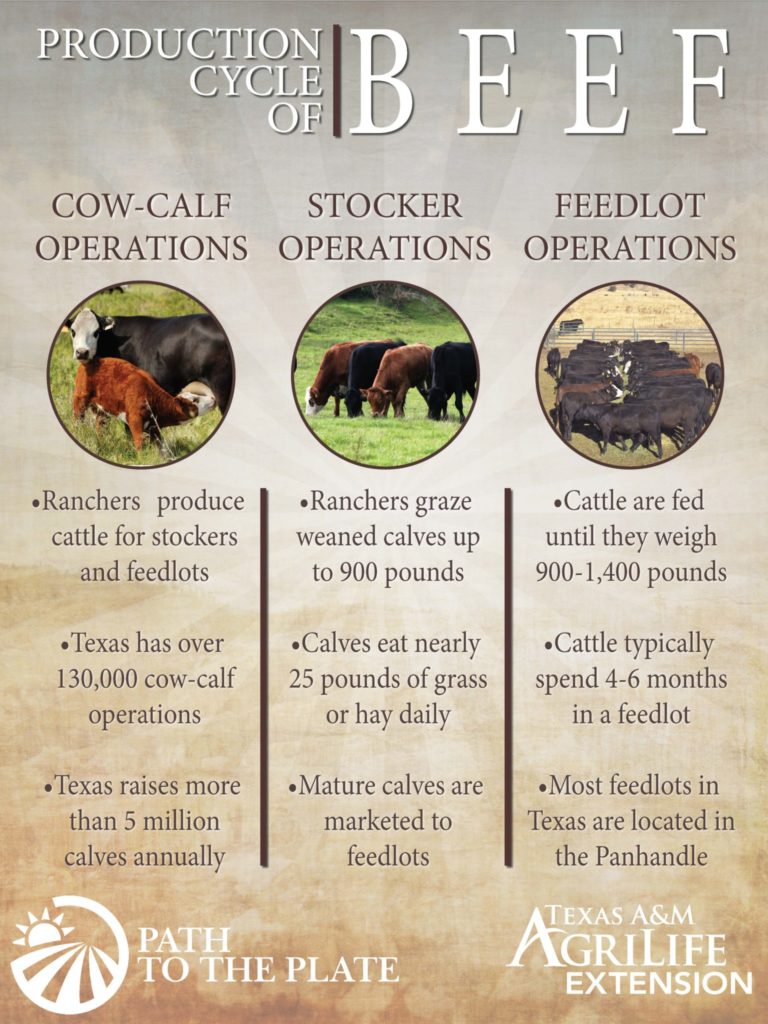
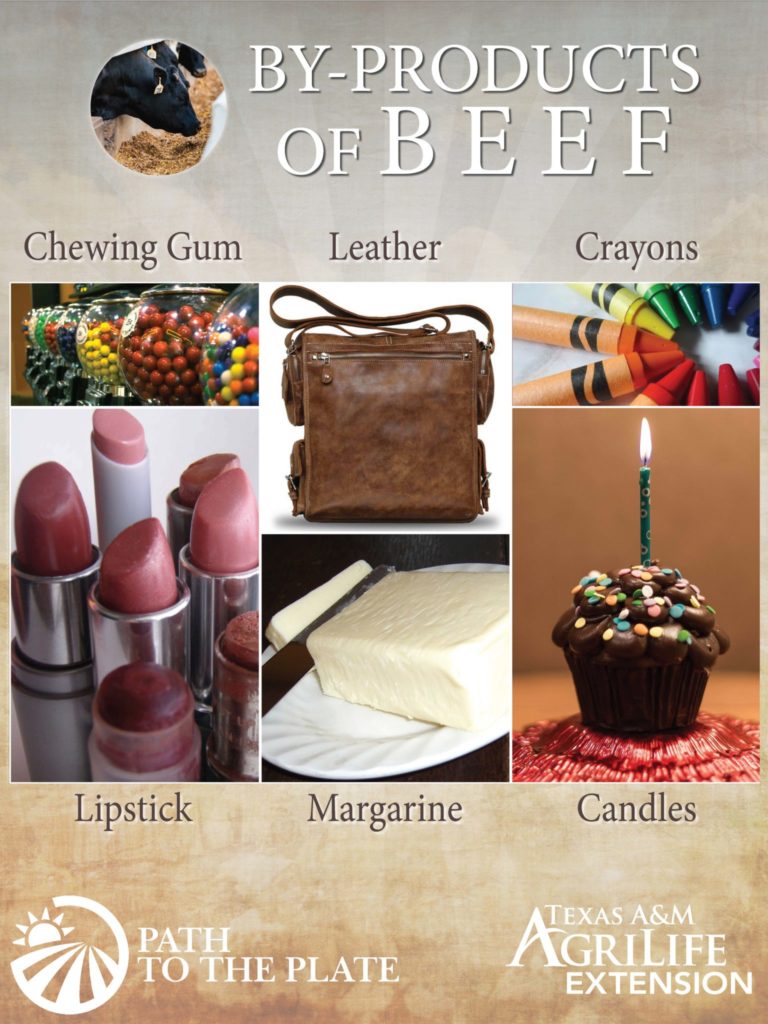
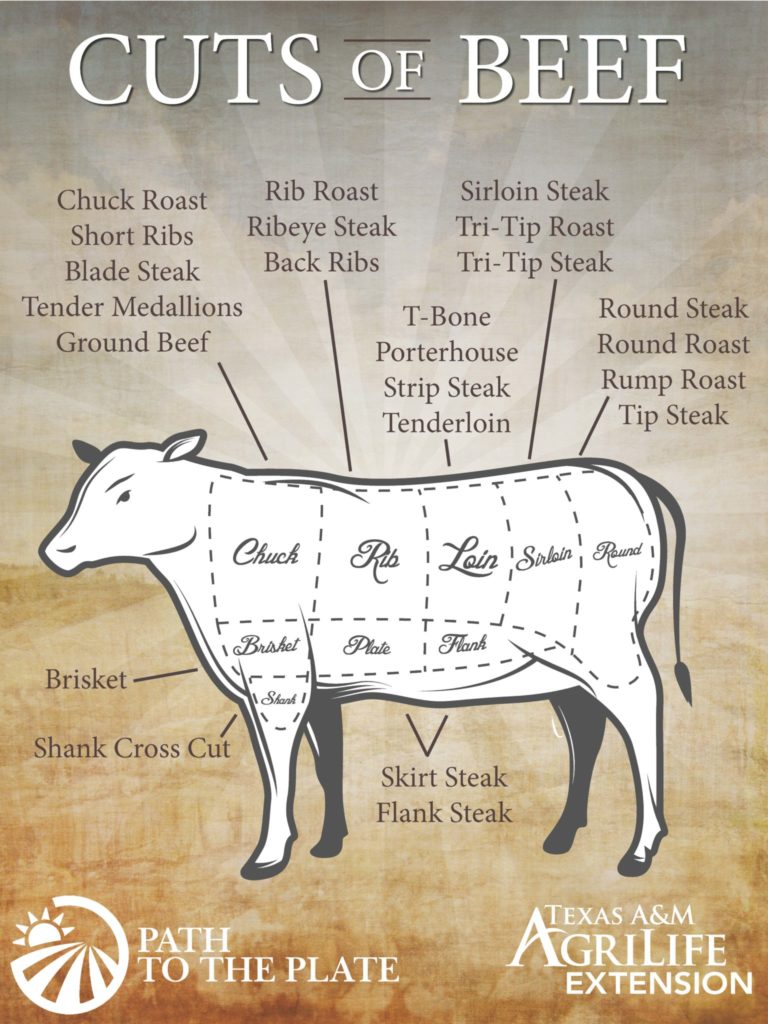
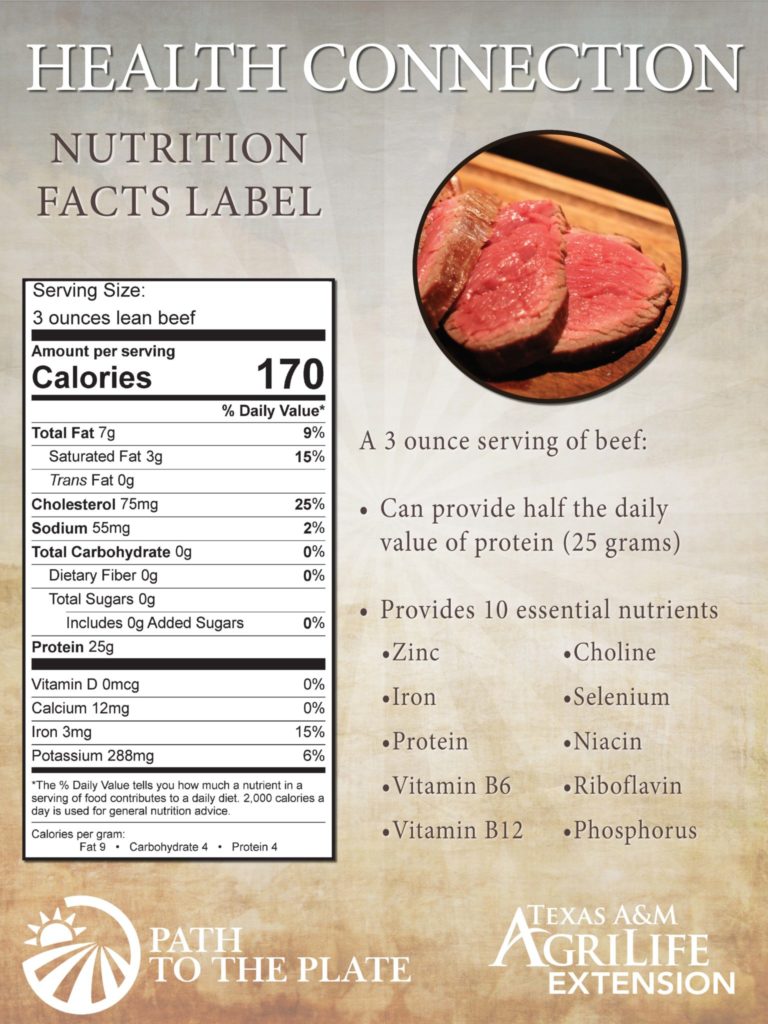
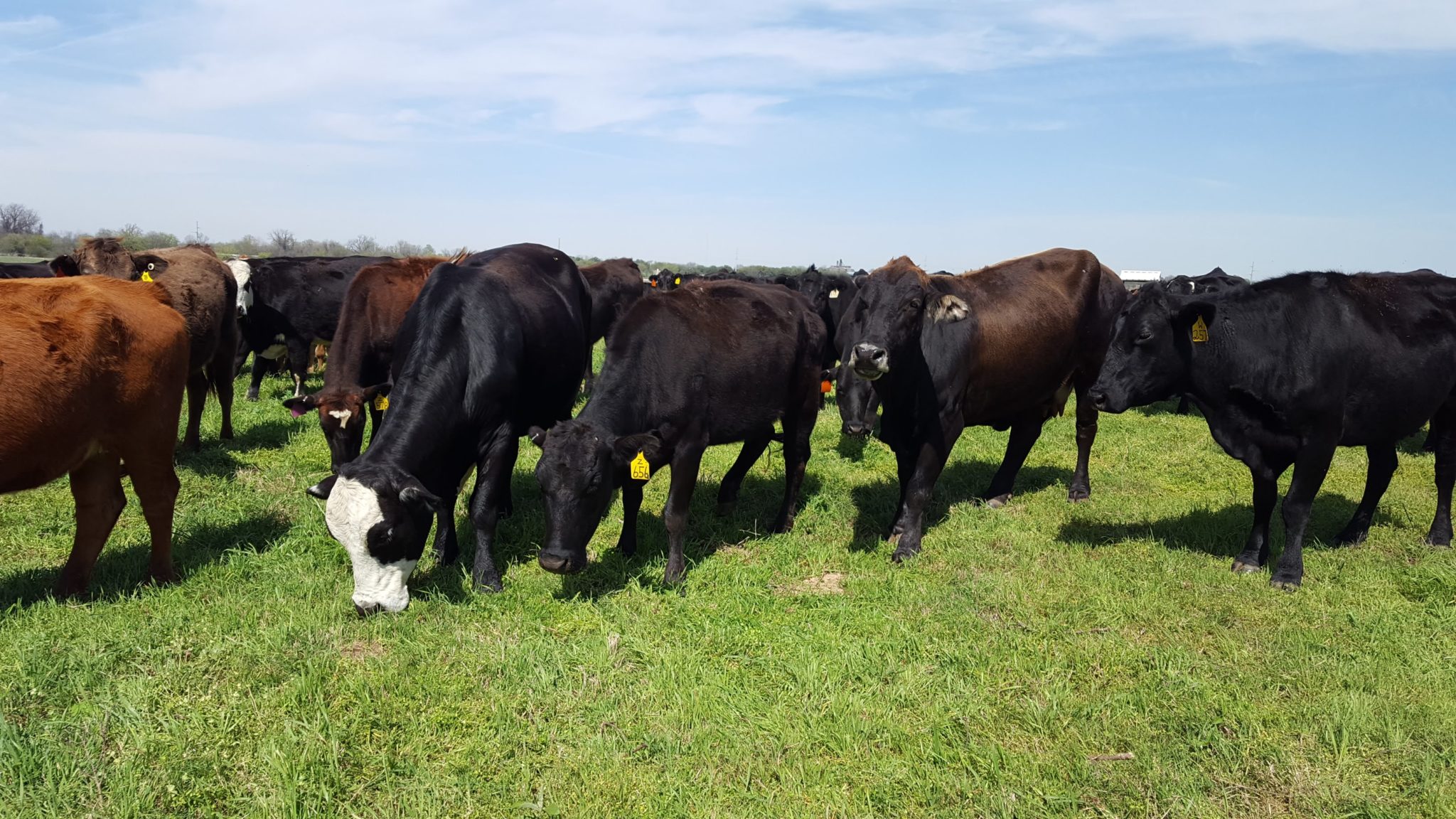
Production
Cow-calf operations produce cattle for the stocker market or feedlot operations or other breeding herds (purebred operations). A purebred operation raises registered or purebred animals.
Stocker operations are where calves go after being weaned from their mothers. They stay here until they weigh as much as 900 pounds, and then they are sent to the feedlot.
In feedlot operations, calves are raised until they weigh 900 to 1,400 pounds. While in the feedlot, cattle are provided a readily digestible and high-energy diet. Cattle typically only spend 4-6 months in a feedlot and are allowed about 300-800 sq. feet of area per head.

More than a steak!
There are many products that are made from beef other than meat. We call these products, by-products or co-products and they can include edible and inedible products.
Common edible co-products include chewing gum, some candies, and gelatin that is used to make ice cream and marshmallows.
Some inedible co-products may include leather, glue, crayons, footballs, candles, and paint brushes.

How is beef prepared?
Beef can be prepared in a number of ways, largely depending on the cut of meat that is being cooked. Steaks can be grilled, while ground beef is typically served as hamburger and browned in a skillet for use in a variety of dishes. Beef can also be roasted, braised, broiled, or stewed.
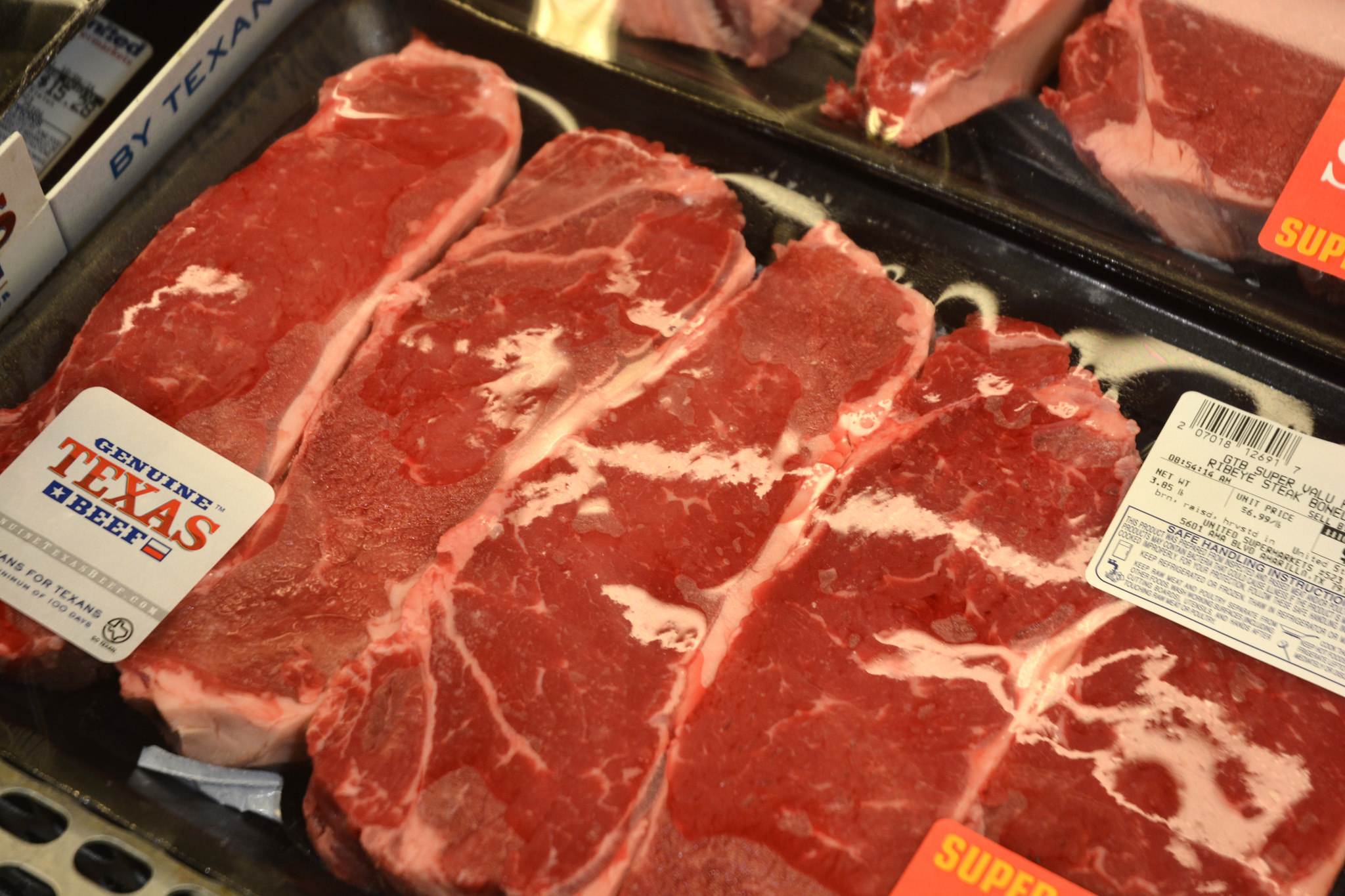
Health and Nutrition
Three ounces of lean beef (about the size of a deck of cards):
- Contains nearly half of the daily value of protein.
- Has 7 grams of fat, 3 grams of saturated fat, and 75 mg of cholesterol
- Is considered “nutrient-dense,” and contains protein, iron, zinc, and B-vitamins. Beef may also help you maintain a healthy weight, build muscle and fuel a healthy and active lifestyle
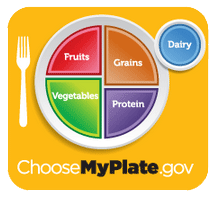
References
Agricultural Marketing Service (2018). Weekly livestock, poultry and grain market highlights. https://www.ams.usda.gov/mnreports/lswlpgmrkthighlight.pdf
Beef Checkoff (2018). Lean beef – a super satisfying balance of taste and nutrition. https://www.beefitswhatsford inner.com/leanbeef.aspx
Institute of Medicine (2006). Dietary Reference Intakes: The Essential Guide to Nutrient Requirements. Washing ton, DC: The National Academies Press. https://doi.org/10.17226/11537
University of Nebraska-Lincoln Institute of Agriculture and Natural Resources (2013). Determining how much for age a beef cow consumes each day. https://beef.unl.edu/cattleproduction/forageconsumed-day
United States Department of Agriculture (2011). Beef and pork byproducts: enhancing the U.S. meat industry’s bottom line. https://www.ers.usda.gov/amber-waves/2011/september/beef-and-pork-byproducts/
Texas Cash Markets: http://tscra.org/news_blog/2016/01/26/tda-market-recap-jan-25-2016/
USDA National Nutrient Database for Standard Reference Legacy Release, April 2018 https://ndb.nal.usda.gov/
